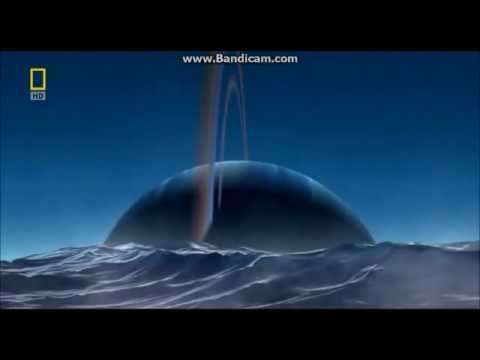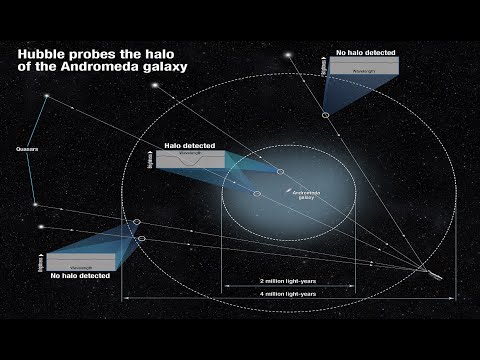What’s Inside A Black Hole? | Unveiled
What’s inside a black holeBlack holes are mysterious and bizarre objects in the universe that really have no explanation in factWe hardly know anything about what lies inside of a black?Hole we know and understand what we see on the outside of a black holeBut we have no way of going inside one to take a look at what is really happeningEven if we sent a probe inside a black holeIt would not survive the journeyAnd there would be no way that the probe could transmit a signal outside once it had been sucked insideThis is because a blackHole is the product of mass being squeezed together, so densely and so tightly that it creates a gravitational poleThat is so strong that not even light can escape its graspSupermassive black holes with masses millions to billions of times that of the Sun are thought to lurk at the hearts of all galaxies inthe universeYou may notice that when you see a photo of a spiral galaxySuch as the Milky Way in the center of the galaxy is a giant mass of light?Which many people would think looks like a massive Sun, but this is not light coming from the black hole itselfRemember that life cannot escape the heavy gravitational pullInstead the light we see comes from magnetic fields near a spinning black hole that propel electrons outward in a jetAlong the rotation axis the electrons produce bright radio wavesQuasars are believed to produce their energy from massive black holes in the center of the galaxies in which the quasars are locatedBut quasars are so bright they drown out the light from all the other stars in the same galaxy. You’re probably asking wellWhat’s a quasar a quasar is the short name for quasi stellar object and is a very highly energetic object?Surrounding an actively feeding supermassive black hole in more basic terms the supermassive black hole in the middle of a galaxy feedsintermittently as it feeds gas swirls around it at incredible speeds andForms an insanely bright hot orbiting disc and if the black hole is swallowing a large amount of material this feeding is accomplished by giganticJets of gas these are called quasarThey are essentially fueled by the black holesThey orbitsome supermassive black hole giants release an extraordinarilyLarge amount of light when they rip apart stars in devour matter and are likely the driving force behind these quasarsWhen material gets too close to a black hole it forms that bright hot accretion disk around the black holeThat accretion disk heats up to millions of degreesBlasting out an enormous amount of radiationThe magnetic environment around the black hole forms twin Jets of material which flow out into space for millions of light yearsThis becomes what is called an active galactic nucleusOr a GN the diet of known black holes consists mostly of gas and dust which fill the otherwise empty space throughout the universeblack holes can also consume material torn from nearby stars in fact the most massive black holes can swallow stars wholeBlack holes can also grow by colliding and merging with other black holesThis growth process is what can and usually does reveal the presence of a black hole?But supermassive black holes aren’t always feeding if a black hole runs out of food the Jets run out of power and shut downRight up until something gets too close and the whole system starts up again the supermassive black hole at the center of our Milky WayGalaxy is all out of food or space material to consumeIt lies completely dormant for the time being a sleeping giant, so it doesn’t have an active galactic nucleusAnd so there is no quasar emitting light howeverWe are on a collision course with another galaxy and in 10 billion years or so when the Milky Way collides with the Andromeda galaxyOur supermassive black hole may roar back to life as a quasar as it begins to consume part of this new galaxyNow it might sound like black holes are dangerous and that anything that even remotely comes close to a black holeWould get sucked inside and be crushed and while it’s true that if you manage to carefully drop an object into a black holeYou’d never get that object back, but black holes are actually remarkably bad at pulling material close to themThere are a couple of reasons for this one black holes aren’t actually attractive to anything for any reason other than gravityMuch like our solar system is in a stable orbits around the Sun the vastmajority of a galaxy is in a stable orbit around the black hole with no real reason to go plunging towards the very center ofThe galaxy the second reason that black holes are bad at being astronomical vacuum cleaners is that they’re really?Really inefficient at getting material close enough to them to cross the event horizon and add to the mass of the black holeEven small black holes which exist in great numbers in the galaxy are much better at tearing a companion star apart than they aren’t actuallyGrowing their own size by consuming the star hole so despite their reputationBlack holes will not actually suck in objects from large distances a black hole can only capture objects that come very close to itThey’re more like venus flytraps than cosmic vacuum cleaners for example imagine replacing the Sun by a black hole of the same masspermanent darkness would fall on earthBut the planets would continue to revolve around the black hole at the same distance and speed as they do nowNone of the planets would be sucked into the black hole our earth would be in dangerOnly if it came within some 10 miles of the black holeMuch less than the actual distance of the Earth from the Sun which is a comforting 93 million miles awaySo after knowing all of this do we have any idea, what is inside of a black hole?Current theories predict that all the matter in a blackHole is piled up in a single point at the centerBut we do not understand how this central singularity works to properly understand the black hole center requires a fusion of the theory of gravityWith the theory that describes the behavior of matter on the smallest scales called quantum mechanicsThis unifying theory has already been given a name quantum gravity, but how it works is still unknownThis is one of the most important unsolved problems in physicsStudies of black holes may one day provide the key to unlock this mysteryEinstein’s theory of general relativity allows unusual characteristics for black holesFor example the central singularity might form a bridge to another universe. This is similar to a so-called wormholeWhich is a mysterious solution of Einstein’s equations that has no event horizon?Bridges and wormholes might allow travel to other universes or even time travel, but without observational and experimental dataThis is mostly speculationWe do not know whether bridges or wormholes exist in the universe or could even have formed in principleBy contrast black holes have been observed to exist and we understand how they formWhat is actually inside of a black Cole is still a mystery?So does a black hole live forever if there is nothing for a black hole to consume then no inFact a very surprising thing happens you might have heard of Stephen HawkingHe is a theoretical physicist in cosmologists, and is at the forefront on the study of black holesHe came up with a theoretical prediction that black holes emit radiation this of course is now known as Hawking radiationHawking radiation reduces the mass and energy of black holes and is therefore also known as black hole evaporationBecause of this black holes that do not gain mass through other means are expected to shrink and ultimately vanishWhat it means is that if the black hole has nothing to eat it?Eventually evaporates the energy and mass that the black hole pulled inside of itselfEvaporates back out into space in the form of radiation. It is almost as if a blackHole is a universe recycling machine Stephen Hawking proved this in1974 by using the laws of quantum mechanics to study the region close to a black hole horizonThe quantum theory describes the behavior of matter on the smallest scales it predicts that tiny particles and light arecontinuously created and destroyed on subatomic scalesSome of the light thus created actually has a very small chance of escaping before it is destroyed to an outsiderIt is as though the event horizon glows the energy carried away by the glow decreases the black hole’s mass until it is completely goneThis surprising new insight show that there is still much to learn about black holesHowever, Hawking’s glow is completely irrelevant for any of the black holes known to exist in the universeFor them the temperature of the glow is almost zero and the energy loss is negligibleThe time needed for the black holes to lose much of their mass isunimaginably long however if much smaller black holes ever existed in the universeThen Hawking’s findings would have been catastrophic a blackhole as massive as a cruise ship would disappear in a bright flash in less than a second asYou can see black holes are incredible and mysterious things perhaps one dayWe will know exactly what lies inside of a blackHole, maybe we will find out that they are gates to another dimension such as wormholesOr maybe we will never know and just come to accept their existence as they are













